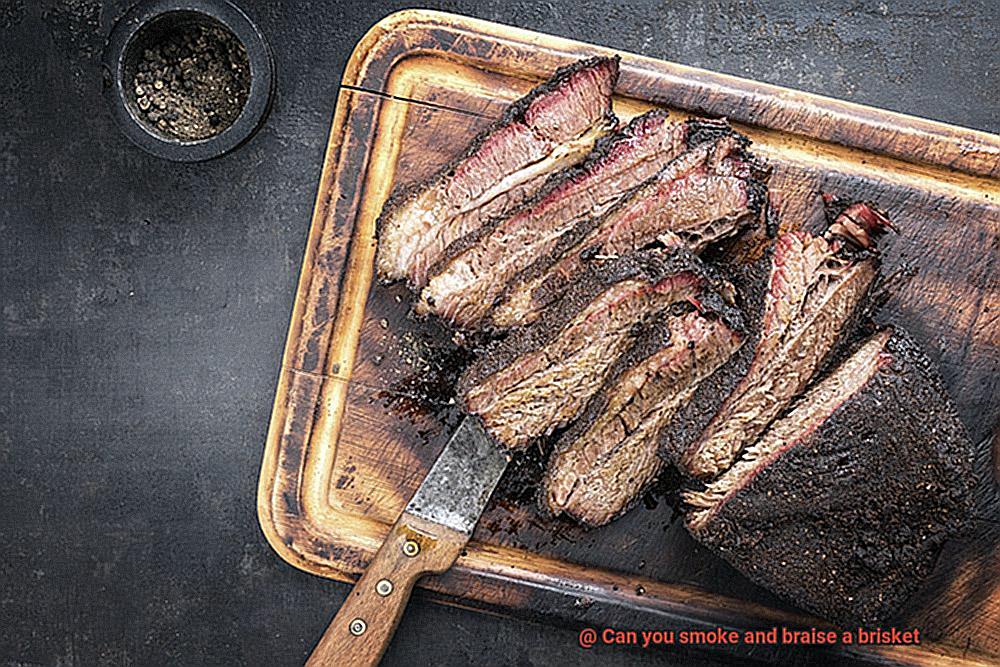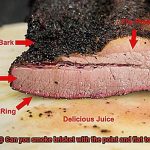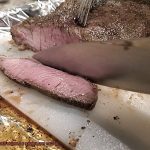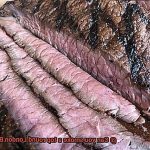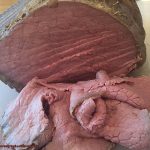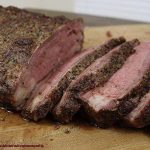Are you a lover of brisket? Do you crave the smoky, juicy flavor of this mouth-watering meat? Well, hold onto your hats because we’re about to introduce you to a whole new level of deliciousness. Yes, we’re talking about smoking and braising a brisket.
Smoking has long been the traditional method for cooking brisket, but by adding braising to the mix, we’re taking things up a notch. The combination of these two techniques results in an explosion of flavors and tenderness that will leave your taste buds singing.
Not only does smoking and braising reduce cooking time, but it also offers endless possibilities for flavor combinations. From spicy to sweet, you can customize your brisket to suit any palate.
In this blog post, we’ll delve into everything there is to know about smoking and braising a brisket. We’ll cover the benefits of this technique, the equipment required, and step-by-step instructions to achieve that perfect blend of smoky goodness.
Whether you’re new to barbequing or an experienced pit master, smoking and braising a brisket is something you need to experience. So grab your apron and get ready for an unforgettable culinary adventure.
Contents
Can You Smoke and Braise a Brisket?
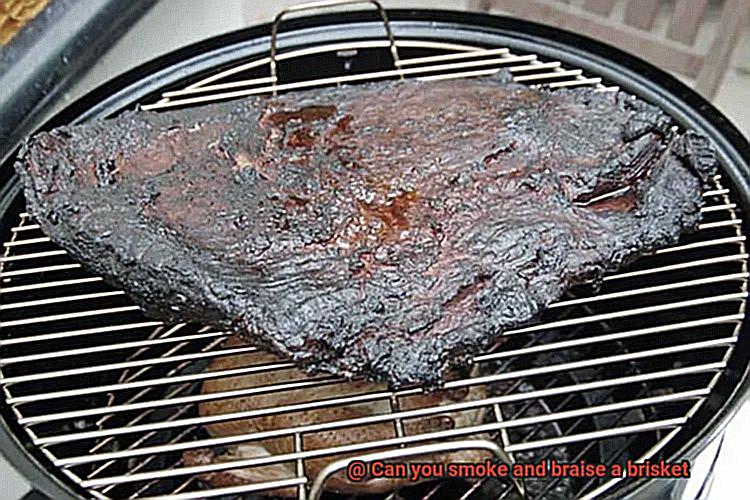
As an expert on this cooking technique, I can assure you that smoking and braising a brisket is not only possible but also a delicious way to cook this tough cut of meat.
Smoking your brisket is the first step to achieving a smoky flavor that cannot be replicated through braising alone. This process involves cooking the meat slowly over low heat and smoke. To achieve the perfect smokiness, maintain a consistent temperature of around 225°F in your smoker and use wood chips or chunks that complement the natural flavors of the meat. The result will be a beautiful bark on the outside of the brisket and a smoky taste that will tantalize your taste buds.
After smoking your brisket, it’s time to braise it. Braising involves cooking meat in liquid at a low temperature for an extended period of time. This method breaks down the tough connective tissue in the brisket, resulting in a tender and juicy final product.
To braise your smoked brisket, place it in a Dutch oven or other heavy-bottomed pot with enough liquid to cover about ⅔ of the meat. A combination of beef broth, wine, beer, herbs, and spices can add depth and complexity to the flavor profile of your brisket. Bring the liquid to a simmer on the stovetop, then transfer the pot to a low oven (around 300°F) for several hours until the brisket is fork-tender.
The key to success in smoking and braising a brisket is finding balance between these two methods. Too much smoke can overpower other flavors while too much liquid can make the meat mushy. It’s crucial to experiment with smoking and braising times and temperatures to find the perfect balance that suits your taste preferences. With practice, you can master this technique and create the best brisket you’ve ever tasted.
The Benefits of Smoking and Braising a Brisket
Look no further than smoking and braising a brisket. This popular cooking technique is a two-step process that produces tender, juicy, and flavorful brisket that meat lovers can’t resist.
Firstly, smoking the brisket over wood chips or charcoal infuses it with a smoky flavor that cannot be replicated through other cooking methods. The slow cooking process over wood chips or charcoal creates a unique flavor profile that is rich, deep, and complex. This smoky flavor complements the natural taste of the beef, making it a favorite among meat enthusiasts.
But that’s not all. Smoking and braising also results in a tender and juicy meat that falls apart with ease. The low and slow cooking method breaks down tough connective tissues in the meat, resulting in a moist and flavorful cut. Braising the meat in a liquid further enhances its tenderness while adding another layer of flavor.
When it comes to seasoning and flavoring, smoking and braising a brisket offers endless possibilities. The smoky flavor pairs well with a variety of herbs, spices, and sauces, giving you endless customization options. Experimenting with different types of wood chips or smoking methods can lead to exciting new flavors to tantalize your taste buds.
Tips for Successfully Smoking and Braising a Brisket
Smoking and braising a brisket can be a challenging process, but it doesn’t have to be. With these helpful tips and tricks, you’ll be able to cook a deliciously juicy and tender brisket that everyone will love.
Choose the Right Cut of Meat
The first step to smoking and braising a brisket is choosing the right cut of meat. Look for a brisket that has good marbling, which will add moisture and flavor during cooking. Remember, brisket is a tough cut of meat that requires low and slow cooking to become tender.
Use the Right Wood
The type of wood you use will affect the flavor of your brisket. Hickory is a popular choice as it has a strong, smoky flavor that pairs well with beef. Pecan and oak are also great options. Just be sure to use hardwood chips or chunks to create smoke and maintain a consistent temperature throughout the smoking process.
Properly Season Your Brisket
Seasoning is key when it comes to smoking and braising a brisket. A dry rub or marinade can infuse flavor into your meat. Be sure to let your brisket sit with the seasoning for at least an hour before cooking to allow the flavors to penetrate the meat.
Monitor Temperature and Smoke
Maintaining a consistent temperature is crucial when smoking your brisket. Use a smoker thermometer and adjust the heat source as needed. Additionally, monitor the smoke level, as too much smoke can overpower the flavor of the meat, while too little smoke can result in a bland taste.
Be Patient
Smoking and braising a brisket takes time, so be patient. Aim for a low and slow cooking method, keeping the temperature between 225-250°F and smoke the brisket for several hours until it reaches an internal temperature of around 165°F.
Once your brisket has smoked, transfer it to a roasting pan with a lid and add in your braising liquid. Cover the roasting pan with the lid and place it in the oven. Braising the brisket will finish off the cooking process, adding tenderness and moisture to the meat. Aim for a final internal temperature of around 200°F before removing it from the oven.
Preparing the Brisket for Smoking and Braising
Preparing a brisket for smoking and braising is a multi-step process that requires attention to detail and patience, but with these simple steps, you’ll be cooking up a masterpiece in no time.
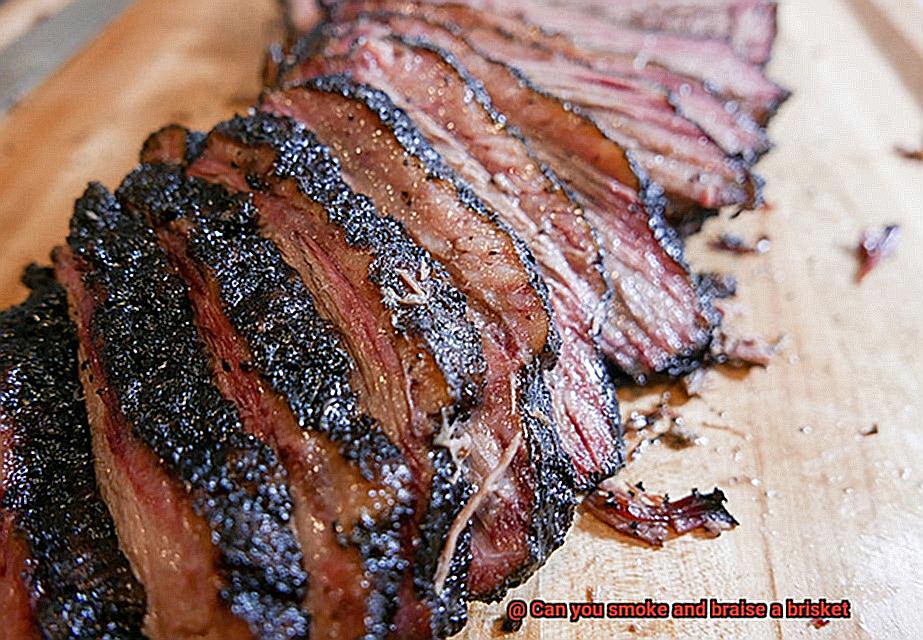
First and foremost, choose the right cut of meat. The beef brisket is the go-to choice for smoking and braising. Look for one with a good amount of fat marbling throughout the meat as this will keep it moist during cooking. A dry, tough brisket is nobody’s idea of a delicious meal.
Trimming your brisket is the next important step. This involves removing any excess fat or gristle from the meat, as well as any silver skin. Trimming not only ensures that the smoke and seasoning can penetrate the meat properly but also makes your brisket look presentable. Aesthetics count when it comes to serving up a dish that wows.
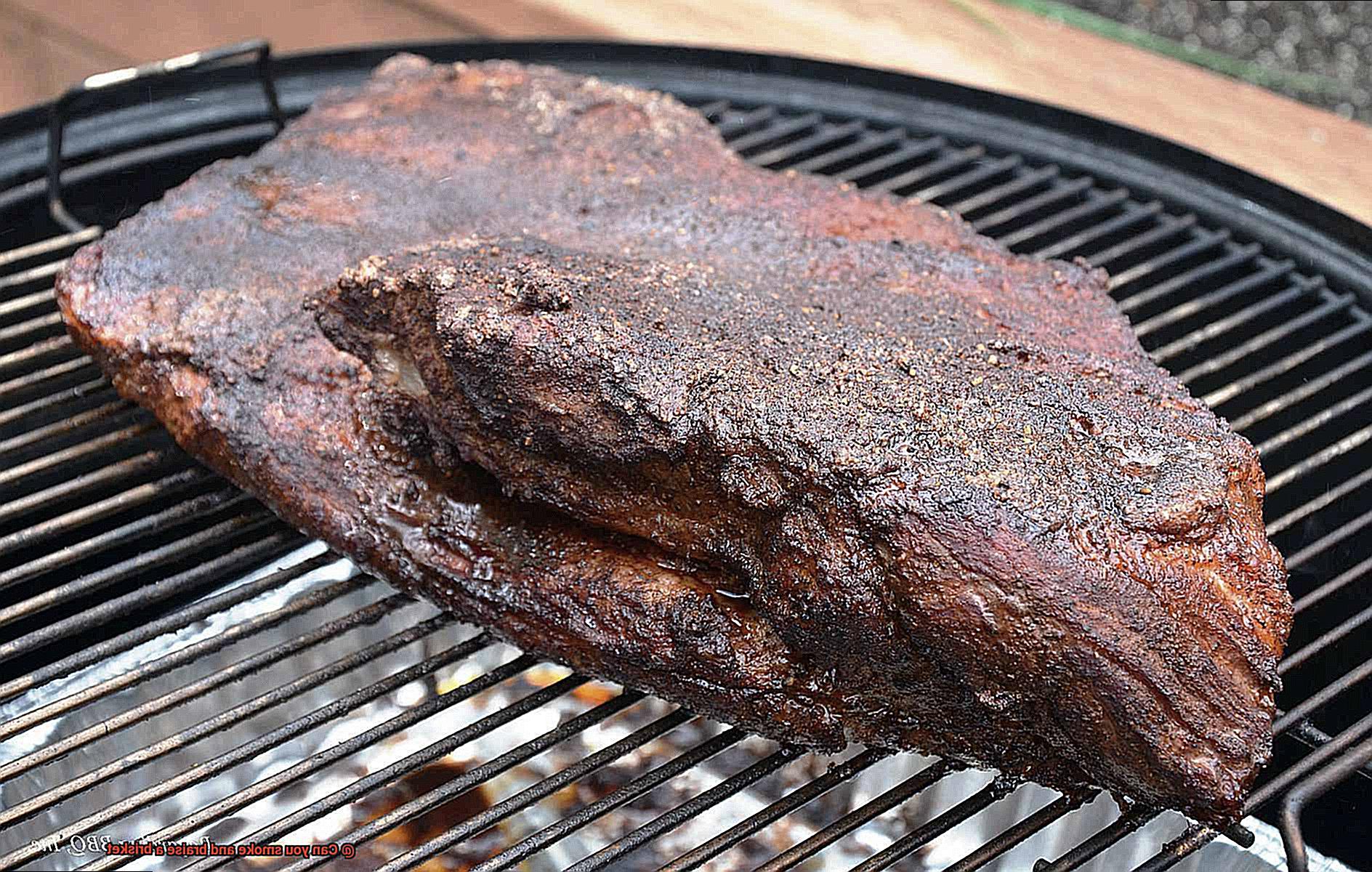
Once trimmed, it’s time to apply a rub. A rub is a blend of spices and herbs that adds flavor to your meat. You can make your own rub using salt, pepper, garlic powder, onion powder, paprika, and brown sugar. Apply it generously to both sides of the brisket and ensure that it is evenly distributed. This step is crucial in making your brisket stand out from the crowd.
At this point, you can either let your brisket rest overnight in the refrigerator or proceed with smoking and braising immediately. When smoking, use a good quality wood like hickory or mesquite to impart a smoky flavor into the meat. The wood you choose will have an impact on the taste of your final product.
After several hours of smoking and once your brisket reaches an internal temperature of around 160-170°F, it’s time to braise it. Braising involves cooking the meat in liquid at a low temperature for an extended period of time. This helps break down tough connective tissue in the meat and makes it tender and flavorful. Don’t rush this step – the longer and slower you braise your brisket, the more succulent it will be.
Smoking the Brisket
To start, choose the right cut of meat – one with enough fat marbling for flavor and tenderness. Apply a generous rub blend of spices and herbs to infuse even more flavor into the meat as it smokes. Quality wood like hickory or mesquite is essential for achieving that mouth-watering crust.
But smoking alone may not always be enough to achieve the desired tenderness and juiciness of a perfectly cooked brisket. Here’s where braising comes in. Slowly cook the brisket in a pot or Dutch oven with a tight-fitting lid and pour in enough liquid to cover about half of the meat. Beef broth, beer, or red wine are all great options for the braising liquid.
Now the waiting game begins. Patience is key here as it may take several hours for the brisket to fully cook and become tender. Be sure to keep an eye on the liquid level to prevent it from evaporating completely.
Once the brisket is fully cooked, remove it from the pot and let it rest for at least 10-15 minutes before slicing and serving. The result should be a perfectly tender and juicy brisket with a smoky flavor that will leave your guests raving.
Transferring the Brisket to the Pot for Braising
Smoking and braising your brisket is one of the best ways to achieve a deliciously tender, juicy, and flavorful meal that will leave your guests asking for more. But the key to success lies in properly transferring your smoked brisket to the pot for braising.
To begin with, it is crucial to ensure that your brisket has been perfectly seasoned and smoked before you start the braising process. This will ensure that your meat is packed with flavor and ready to absorb all the deliciousness of your braising liquid.
When it’s time to transfer your brisket to the pot, use a pair of tongs or a meat fork to handle it carefully. Piercing the meat can cause it to lose moisture and flavor, so take it slow and be gentle.
Before placing the brisket in the pot, prepare any additional ingredients you want to include in your braising liquid. This can include classic vegetables such as onions, carrots, and celery, along with herbs and spices like bay leaves and thyme. These elements will give your meat an added layer of depth and flavor.
Once everything is prepped, carefully place your smoked brisket in the pot with the braising liquid and other ingredients. Ensure that the brisket is fully submerged in the liquid and then cover the pot with a tight-fitting lid.
The next step is all about patience and attention to detail. Keep an eye on the temperature of your braising liquid and adjust it as needed to maintain a gentle simmer. Turning your brisket over once or twice during cooking will help ensure even cooking.
Cooking Time, Temperature, and Liquid Amounts for Braising
Smoking and braising it is the way to go. But before you fire up your smoker, let’s delve into the importance of controlling cooking time, temperature, and liquid amounts.
First things first, let’s smoke that brisket. This step is crucial for developing that rich, smoky flavor and caramelized crust we all know and love. But can you smoke and braise a brisket at the same time? Absolutely. Although it requires careful attention to cooking time, temperature, and liquid amounts.
To begin braising, transfer the smoked brisket to a Dutch oven or roasting pan with a lid and add enough liquid to cover about ⅔ of the meat. You can choose from various liquids like beef broth, red wine, or beer to infuse your brisket with additional flavors. You can also add vegetables and herbs for added depth.
Now, let’s talk about cooking time. The key to tender, juicy brisket is low and slow cooking. Plan for about an hour of cooking time per pound of meat. But don’t forget about temperature. Keep the heat around 325-350°F for optimal results. This will ensure that the meat cooks evenly and stays moist.
As for liquid amounts, it’s essential to periodically check the level throughout the cooking process to make sure it doesn’t evaporate entirely. If required, add more liquid to keep the meat moist and flavorful. This will prevent the meat from drying out during the long cooking process.
Once your brisket is fully cooked and has reached at least 190°F internal temperature, it’s time to let it rest for at least 10-15 minutes before slicing. This allows the juices to redistribute throughout the meat, making it even more succulent and tender.
Finding the Balance Between Smoky Flavor and Tenderness
Achieving this balance is the key to smoking and braising a brisket that will leave your guests begging for more.
Smoking your brisket provides a distinct smoky flavor that can be enhanced with wood chips or chunks. However, smoking alone may not always result in the tender meat you crave. That’s where braising comes in. Braising involves cooking the meat in liquid, which helps to break down the tough muscle fibers and results in a juicy, tender brisket.
So, how do you achieve both smoky flavor and tenderness? Combine smoking and braising techniques. Start by smoking your brisket until it reaches an internal temperature of around 160-170°F. While smoking, maintain a steady temperature and smoke level to ensure that the brisket absorbs enough smoke flavor. Wrapping it in foil or butcher paper during smoking can also help to retain moisture and prevent drying out.
Once smoked, transfer your brisket to a pot with flavorful liquid such as beef broth or beer and continue cooking until it reaches an internal temperature of 195-205°F. Keeping the liquid at a low simmer is crucial as boiling can toughen the meat.
By combining smoking and braising techniques, you can achieve a perfectly balanced brisket that is both smoky and tender. Experiment with different woods, liquids, and seasonings to find your ideal flavor profile. Remember to be patient and pay attention to detail for delicious results every time.
oCuTI-kjJgQ” >
Conclusion
In conclusion, the art of smoking and braising a brisket is a culinary technique that elevates the humble beef cut to a smoky, juicy, and flavorful masterpiece. The combination of these two methods creates an irresistible taste sensation that will leave your taste buds singing.
Smoking imparts that distinct smoky flavor that can only be achieved through this method. It’s essential to experiment with different woods, such as hickory or mesquite, to create your ideal flavor profile. Maintaining consistent temperature and smoke levels during smoking is crucial to ensure the brisket absorbs enough smoke flavor.
Braising helps break down tough connective tissue in the meat resulting in a tender and juicy final product. To achieve this perfect balance between smoky flavor and tenderness, it’s crucial to keep the liquid at a low simmer during braising. Boiling can toughen the meat and ruin all your hard work.
By following these simple steps, you too can master this technique and create the best brisket you’ve ever tasted. Whether you’re new to barbequing or an experienced pit master, smoking and braising a brisket is something everyone needs to experience at least once in their lifetime.

